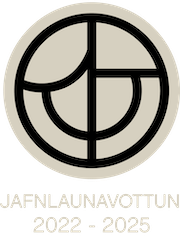Microfeed - Single Cell Proteins from Biorefinaries and Geothermal Power Plants as protein source for aquatic animals
Fréttatilkynning verkefnisstjóra
The EU/Eurostar project (Microfeed) focused on producing Single Cell Protein (SCP) from forest industry side streams and to develop technology for the utilization of effluent geothermal gas from geothermal power plants for microbial cultivations and production of single-cell protein using hydrogen, hydrogen sulphide and carbon dioxide contained in the gas.
Turning forest residues and gas from geothermal power plant into
FISH FEED
Demand for fish is expected to rise sharply over the next few decades and the only way to meet that demand is to farm fish. The problem at the moment is that much of the feed for the farms derives from fish meal, which puts extreme pressure on fish stocks.
Processum Sweden, Matis ohf Prokatin and Sæbýli Iceland are developing a possible solution to aspects of the problem.
Fish meal is the dominant protein source in fish food, but its production is an environmental threat in itself since large quantities of fish are harvested from the sea and ground down. The expected shortage in protein has to be met with alternative protein sources, which need to be economically and environmentally sustainable, high quality and not compete with human food production.
Heiti verkefnisins: Microfeed - Single Cell Proteins from Biorefinaries and Geothermal Power Plants as protein source for aquatic animals
Verkefnisstjóri: Ragnar Jóhannsson, Matís ohf.
Tegund styrks: Verkefnisstyrkur - Eurostars
Styrkár: 2011-2012
Fjárhæð styrks: 25 millj. kr. alls
Tilvísunarnúmer Rannís: 11-1054

VERKEFNIÐ VAR STYRKT AF TÆKNIÞRÓUNARSJÓÐI.
PROTEIN FROM MICROORGANISMS
The EU/Eurostar project (Microfeed) focused on producing Single Cell Protein (SCP) from forest industry side streams and to develop technology for the utilization of effluent geothermal gas from geothermal power plants for microbial cultivations and production of single-cell protein using hydrogen, hydrogen sulphide and carbon dioxide contained in the gas. The project's main aim is to develop a replacement product for fish meal. The idea of producing SCP from industrial side streams is in fact nothing new. During the First and Second World Wars, some research went into producing SCP, although primarily as a human food. The reason that the SCP concept would work today, when it failed before, is the current eco-awareness, combined with the sharp price rises caused by the prospect of the protein raw material, i.e. fish, running out. There have been other experiments, with mixed results, in which the fish proteins were replaced with soya protein, for example. The benefit of SCP is that the protein comes from microorganisms such as bacteria, yeasts, algae and filamentous fungi. Genetically, they are closer to animals and humans than plants such as soya are. They also reproduce and double their populations very quickly. A couple of kilos of microorganisms can grow to a weight of several tonnes in a day.
UNIQUE OPPORTUNITIES FOR RESEARCH
After just over a year, the project moved from the laboratory phase to the pilot phase.
“Here in Örnsköldsvik we're sitting on a goldmine when it comes to equipment for industrial biotech nology,” states Björn Alriksson, a research and development engineer at Processum. “We have access to equipment for industrial biotechnology on a lab scale, pilot scale and demo scale all in the same place. There are only a few locations in the world like that. We've run BioBo (the bioreactor) for maybe 80 days, 24 hours a day, and the filter press, decanter centrifuge, high speed centrifuge and grinder have also been used in the project.” As well as members of The Biorefinery of the Future (Sekab E-technology, Domsjö Fabriker and Umeå University), the project also involves three companies Prokatín, Saebyli and Matis ohf Iceland. “What we're doing now,” explains Björn, “is that we've produced a few kilos of the protein and sent it to our colleagues at Matis ohf Iceland. They're testing out replacing different proportions of the fish meal with the protein and feeding it to the fish. Then they're comparing this with traditional feeds to see whether it produces better or worse growth, whether it's harmful to the fish and so on.” The Single Cell Proteins proved to be a very good protein source for the fish, especially the feeds based on proteins from filamentous fungi such as P. variotii and F. venenatum. The average fish growth per fish tank was similar to or better than the control.
SCALING UP PROTEIN PRODUCTION
The project is now shifting up a gear from manufacturing around 50 litres to upwards of 10,000 litres at the demo plant. At the same time, the marketing potential for the product is also under the microscope.
“This is a new area for us,” says Björn. “We haven't worked on this specifically before, so we've learned a great deal by testing how different organisms react to the different streams, what happens when we scale things up and what problems that brings. Processum is moving to the next phase, where the product is tested on a larger scale and we see what it would take to begin commercial production.”
Listi yfir afrakstur verkefnisins, sem og skýrslur, greinar og handrit.
- Fish feed from wood. Björn Alriksson, Andreas Hörnberg, Asgeir Eirikur Gudnason, Stephen Knobloch, Jon Arnason, Ragnar Johannsson NWBC 2014 - the 5th Nordic Wood Biorefinery Conference.
- Turning forest residues into FISH FEED Björn Alriksson and Andreas Hörnberg. Biorefinery of the Future | Activity Report 2012

